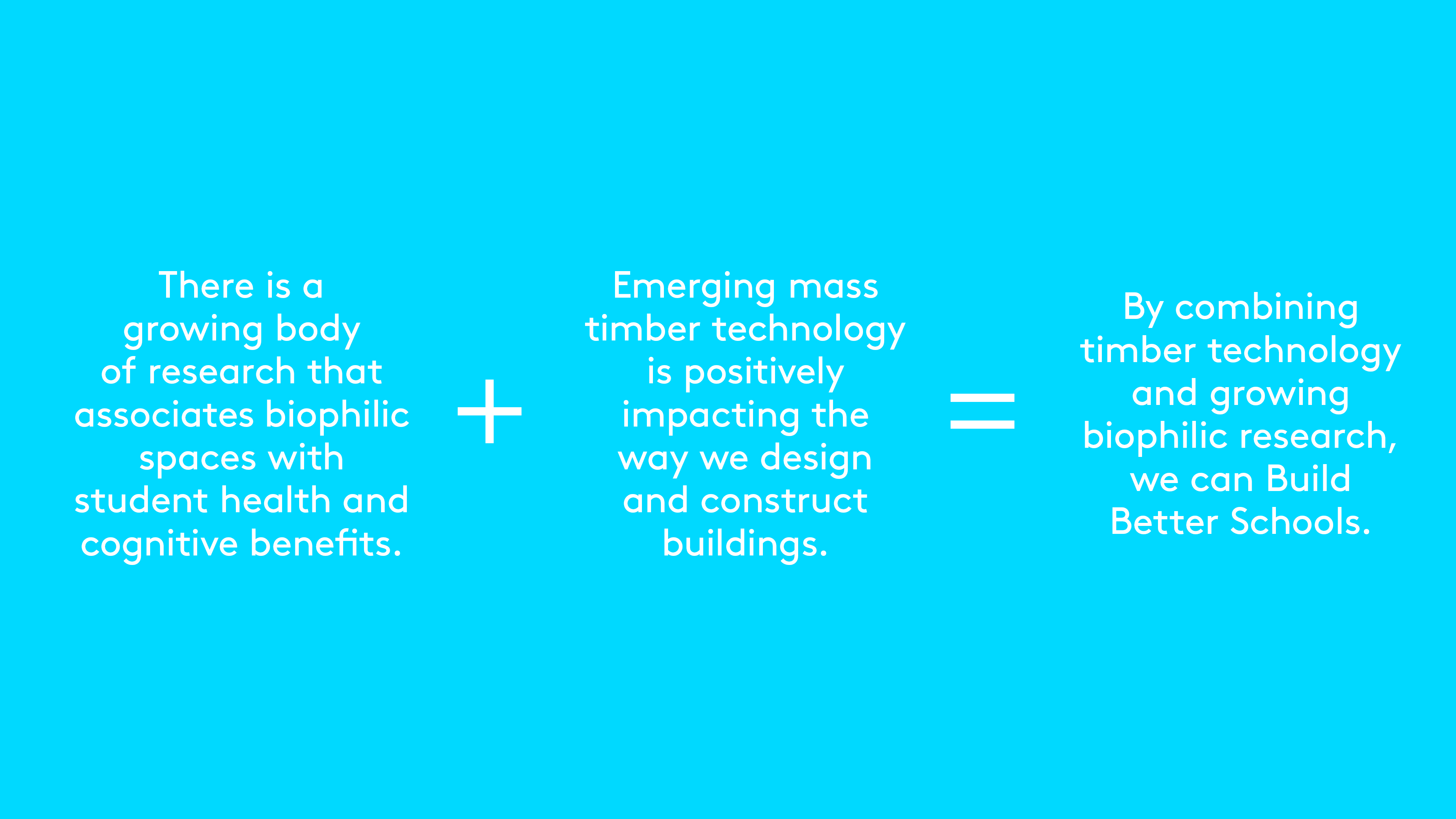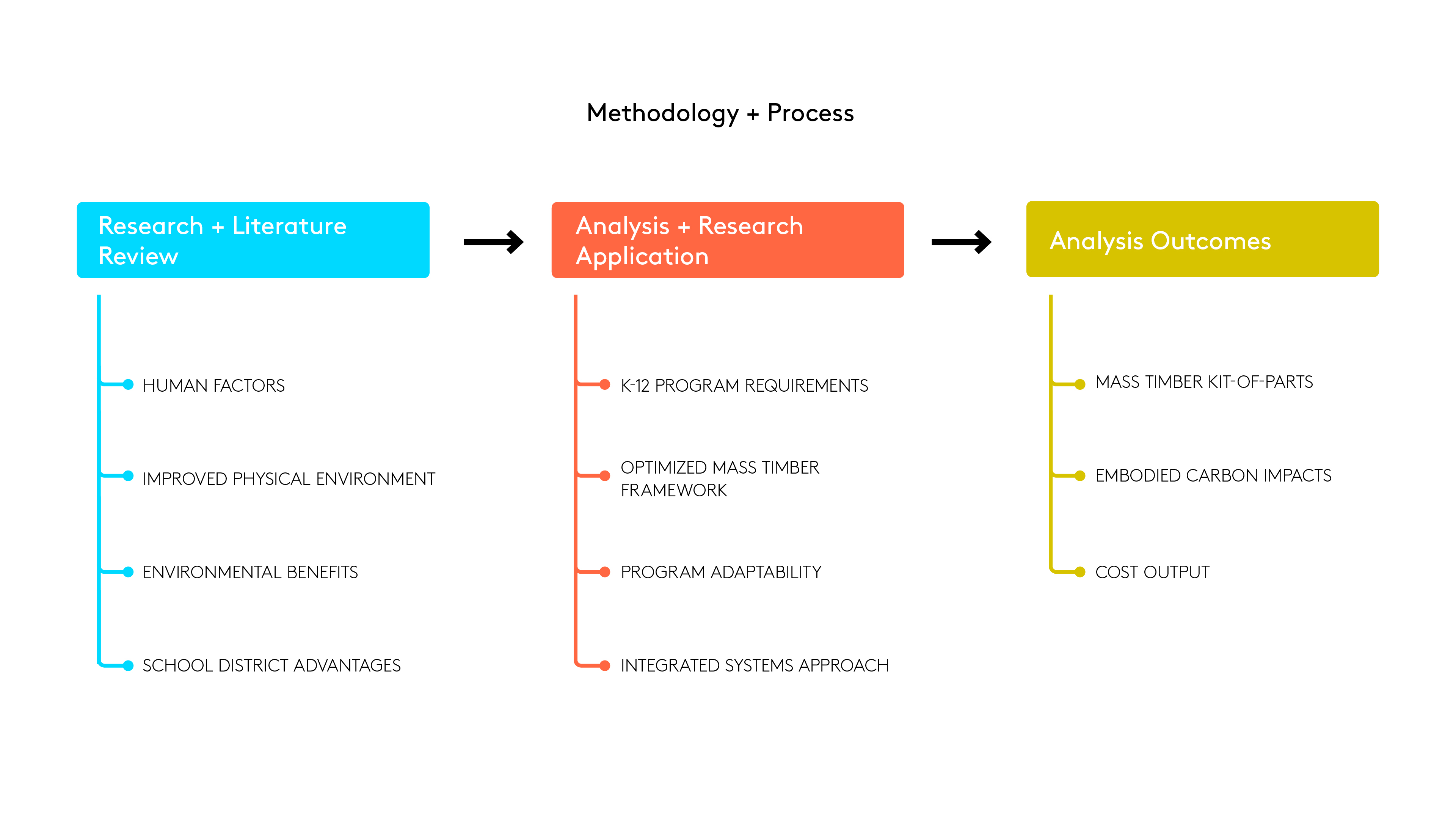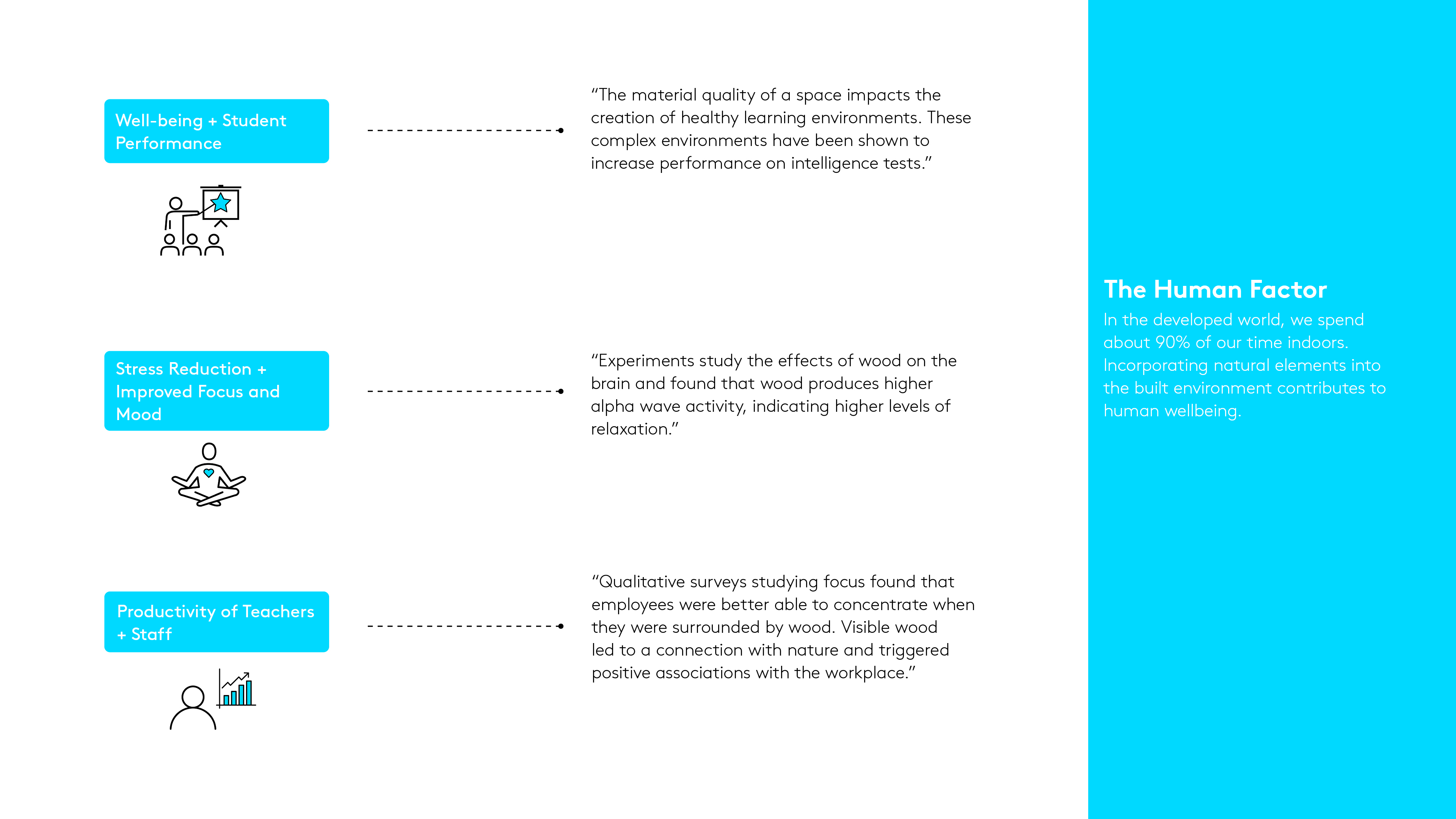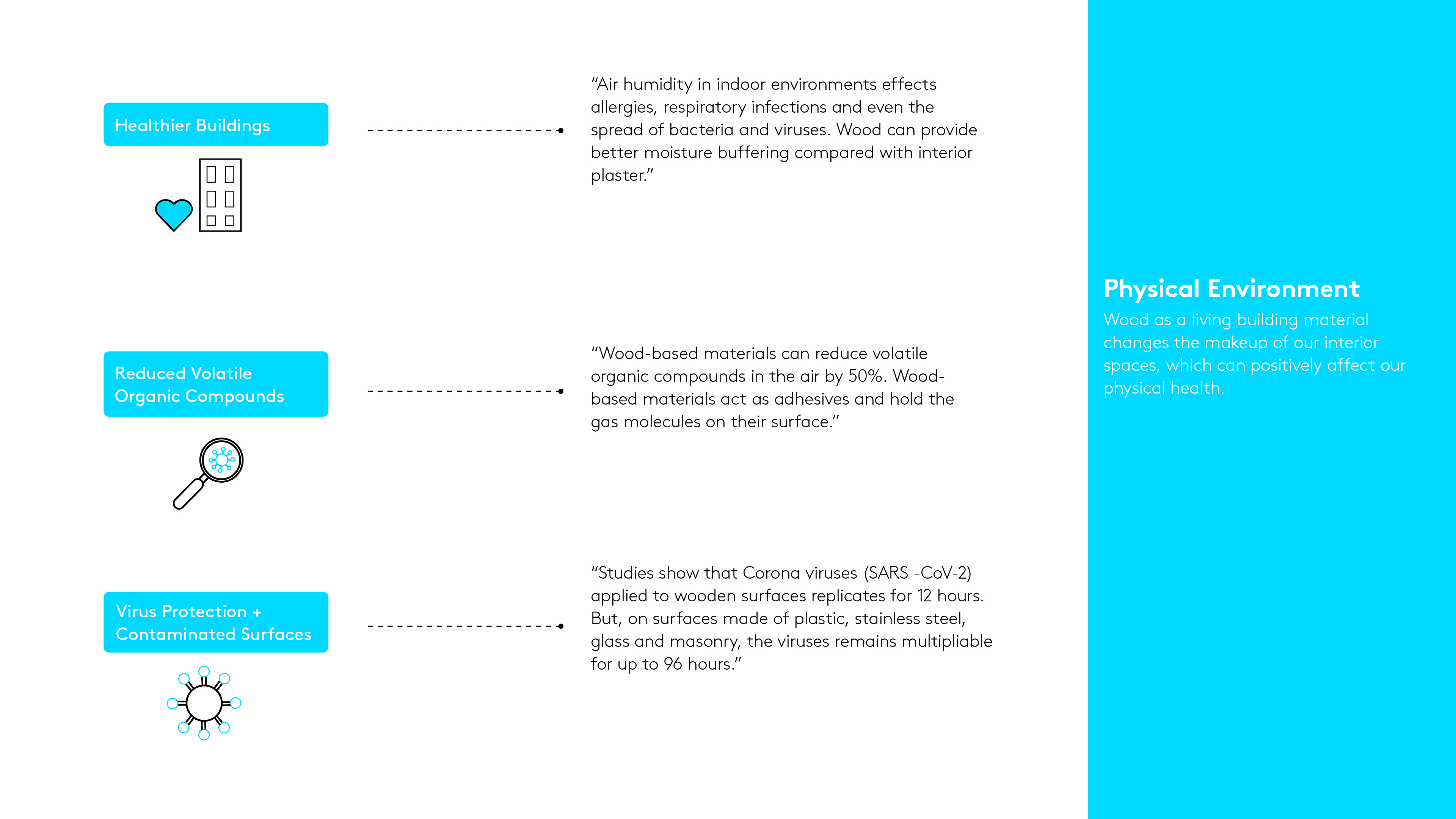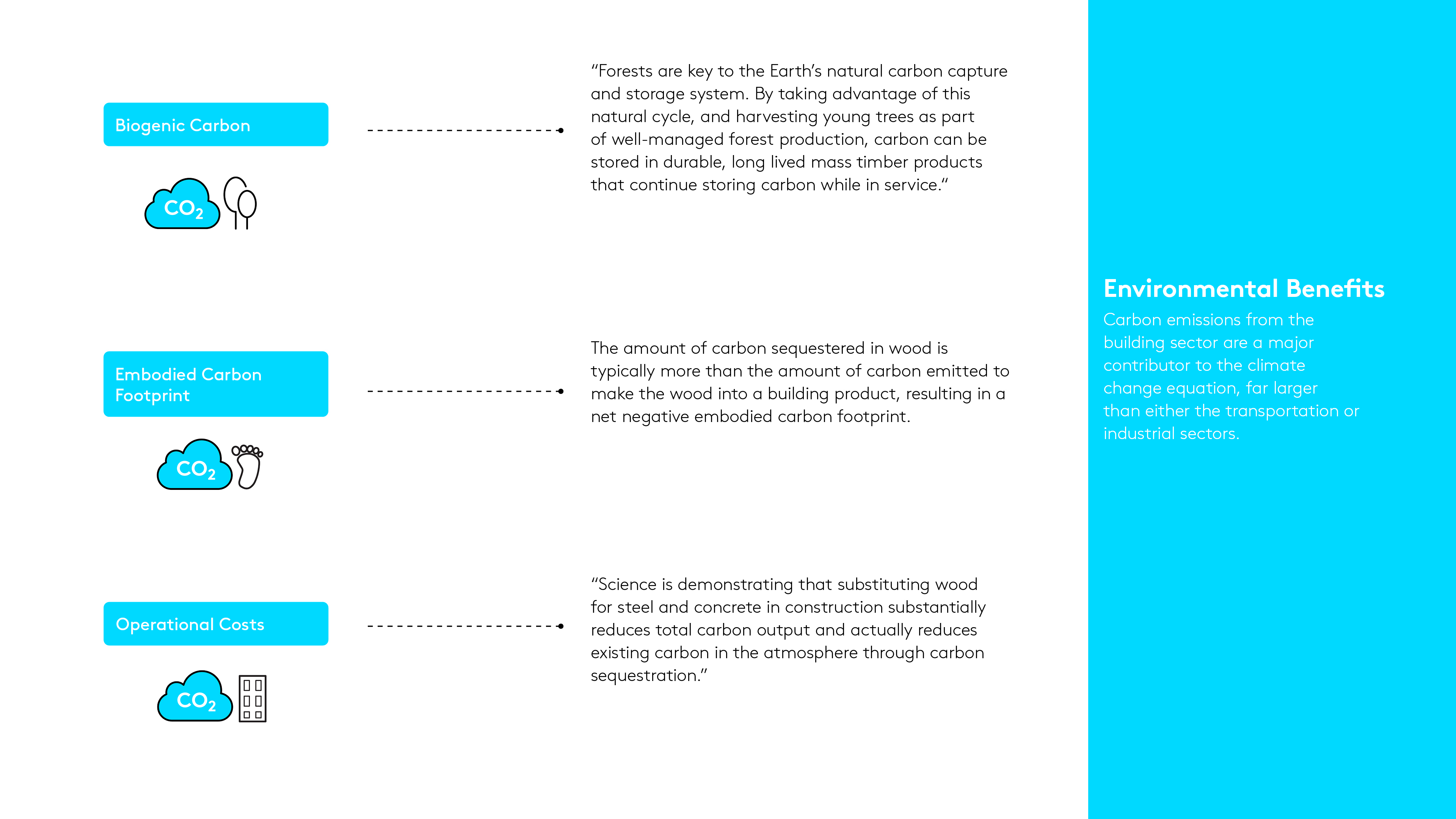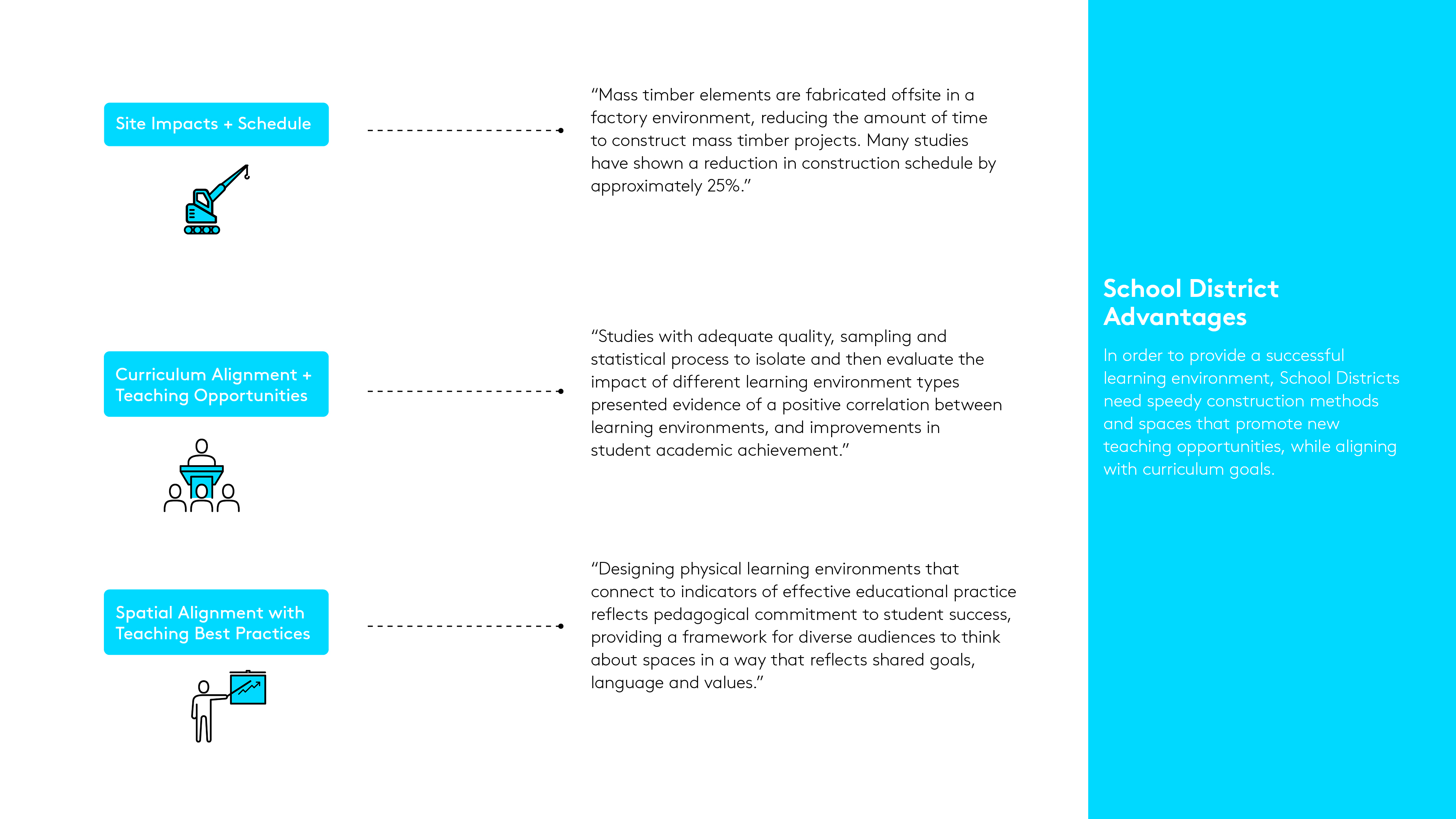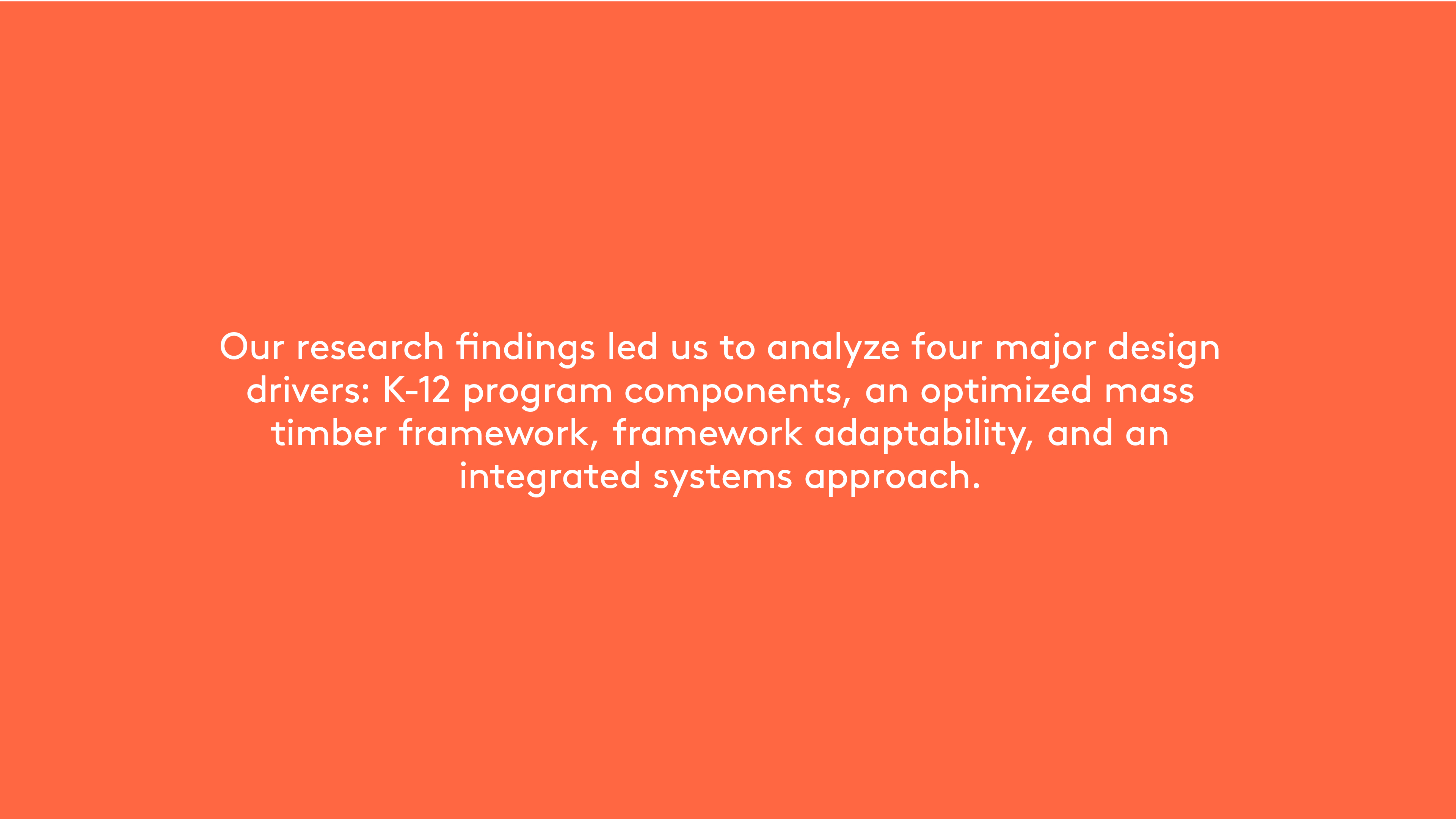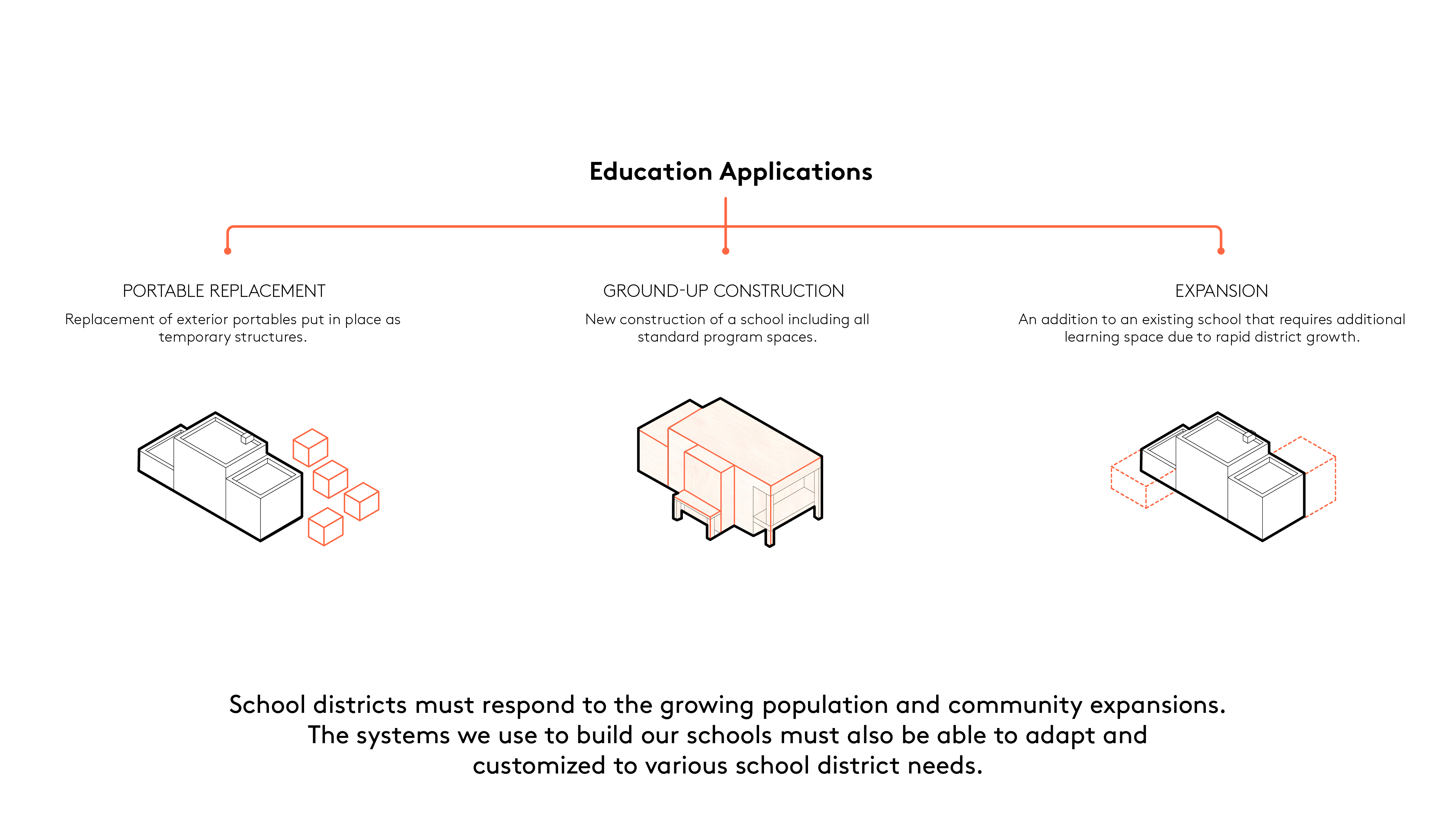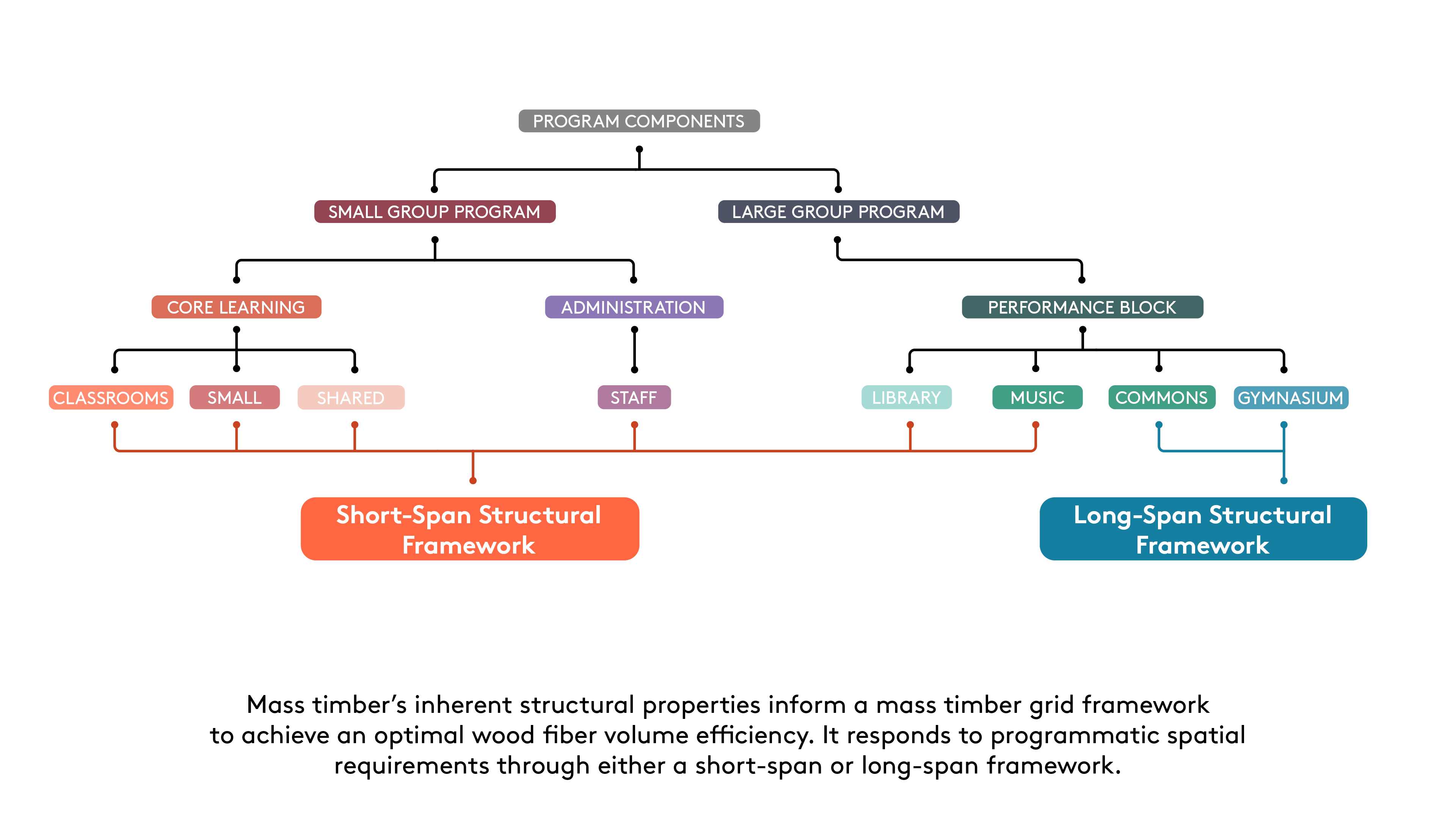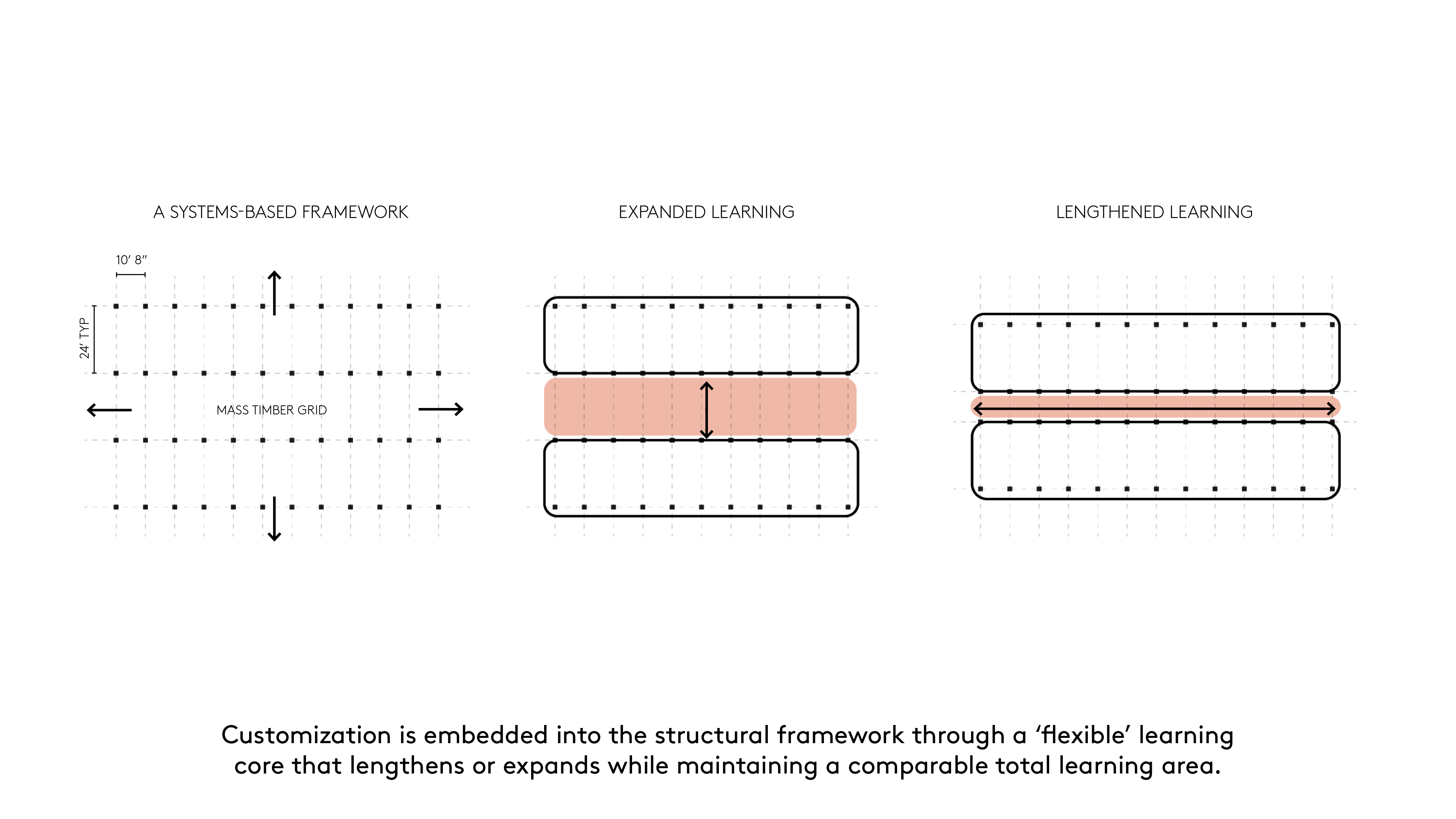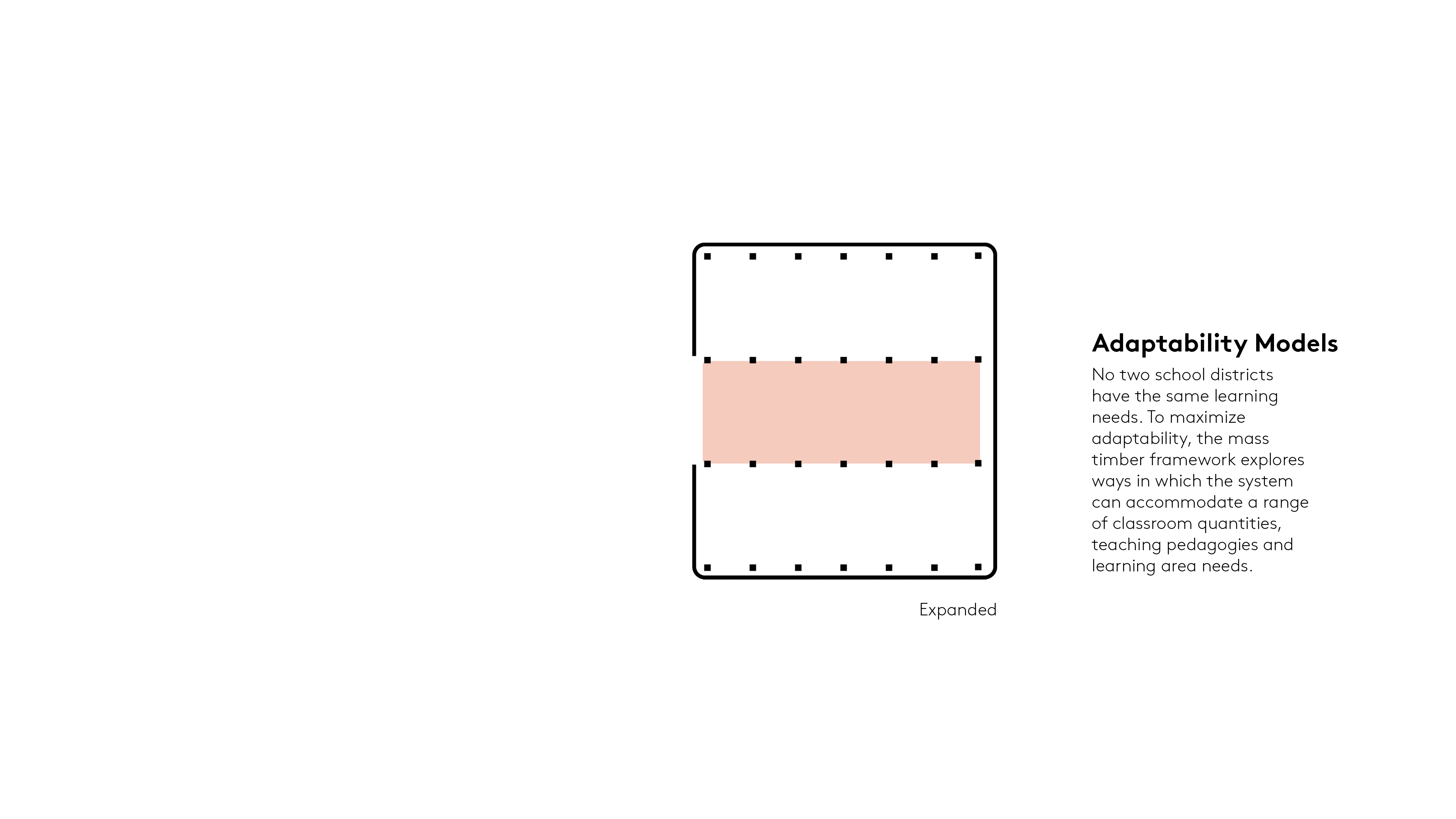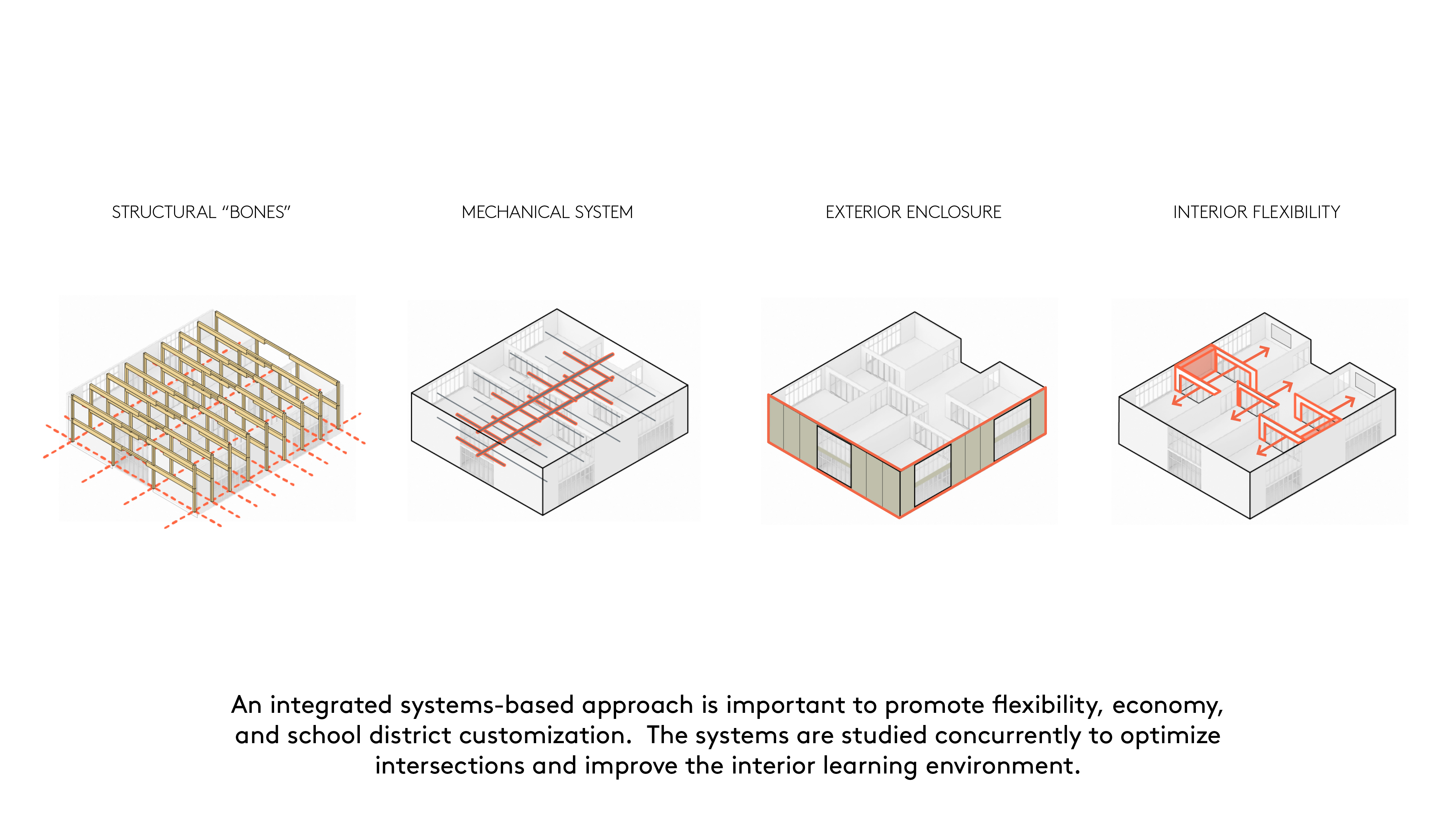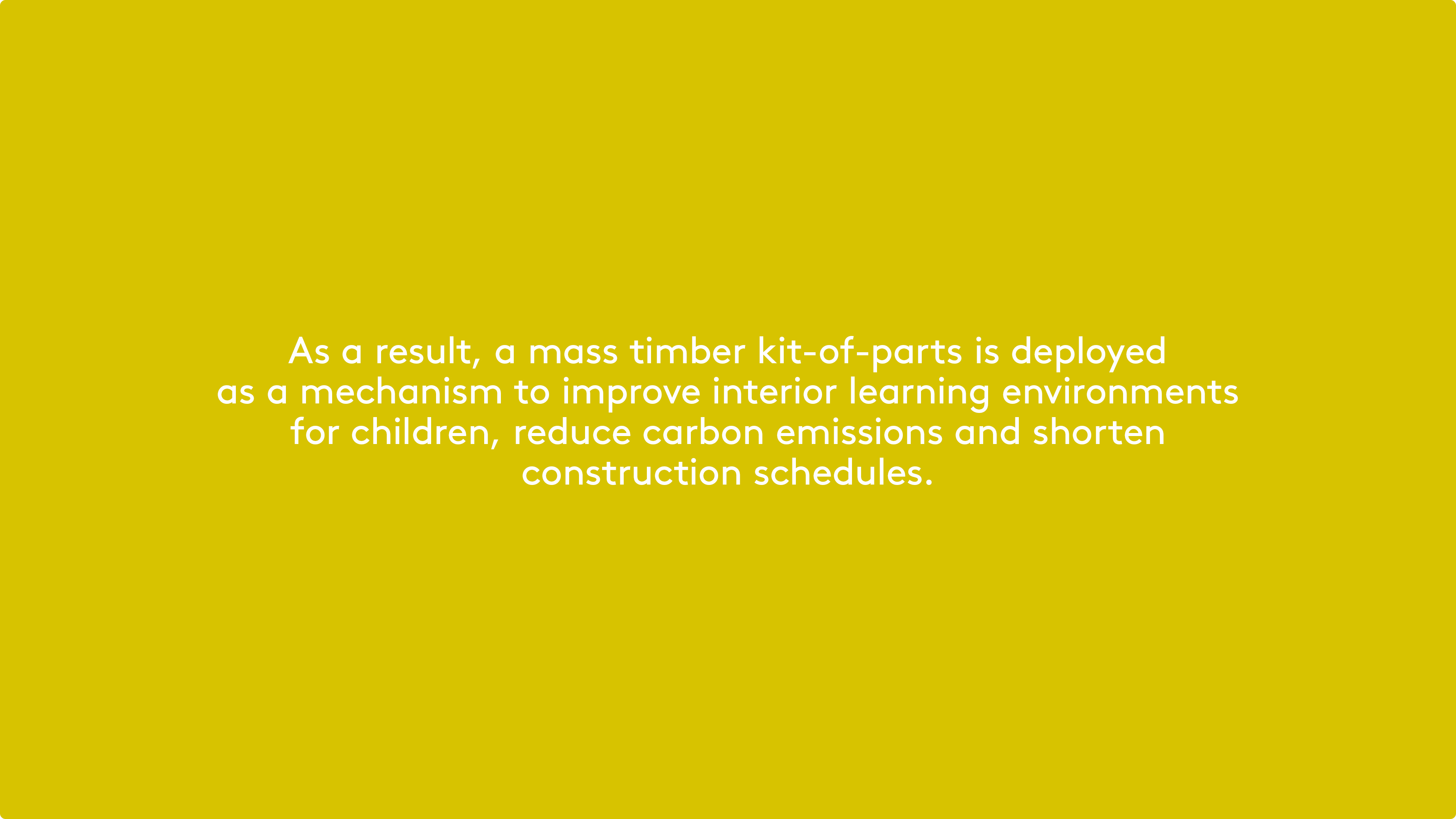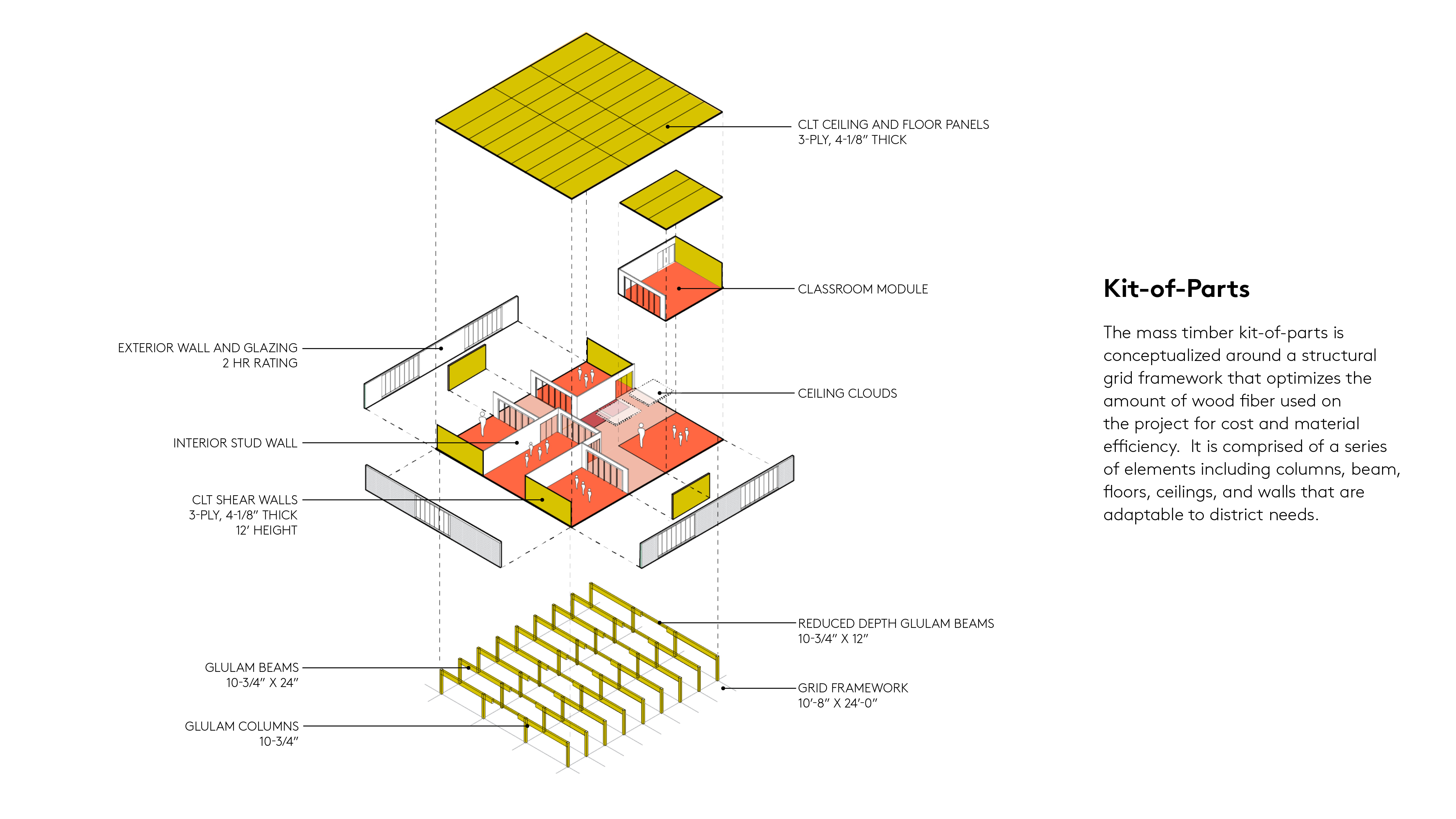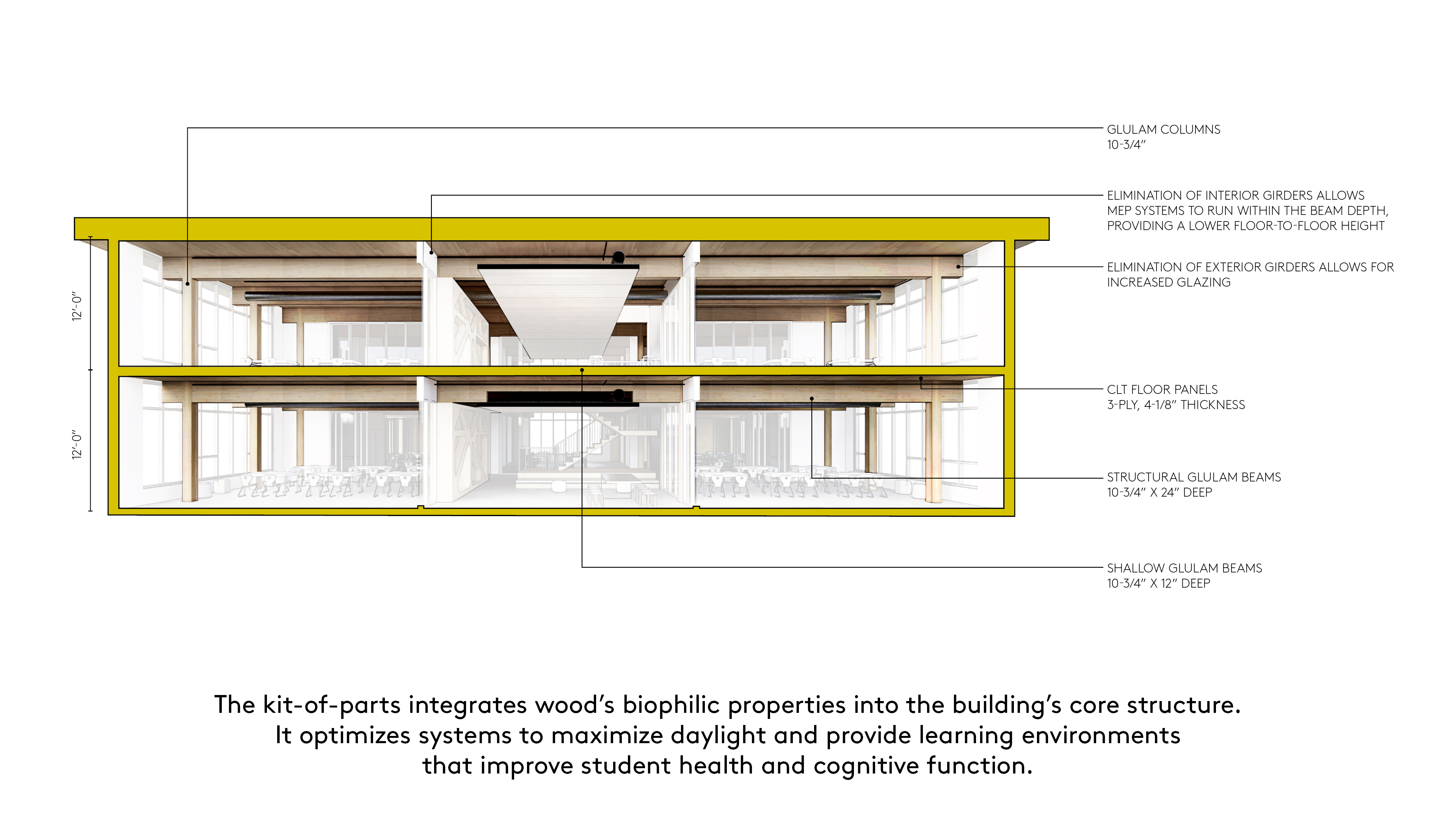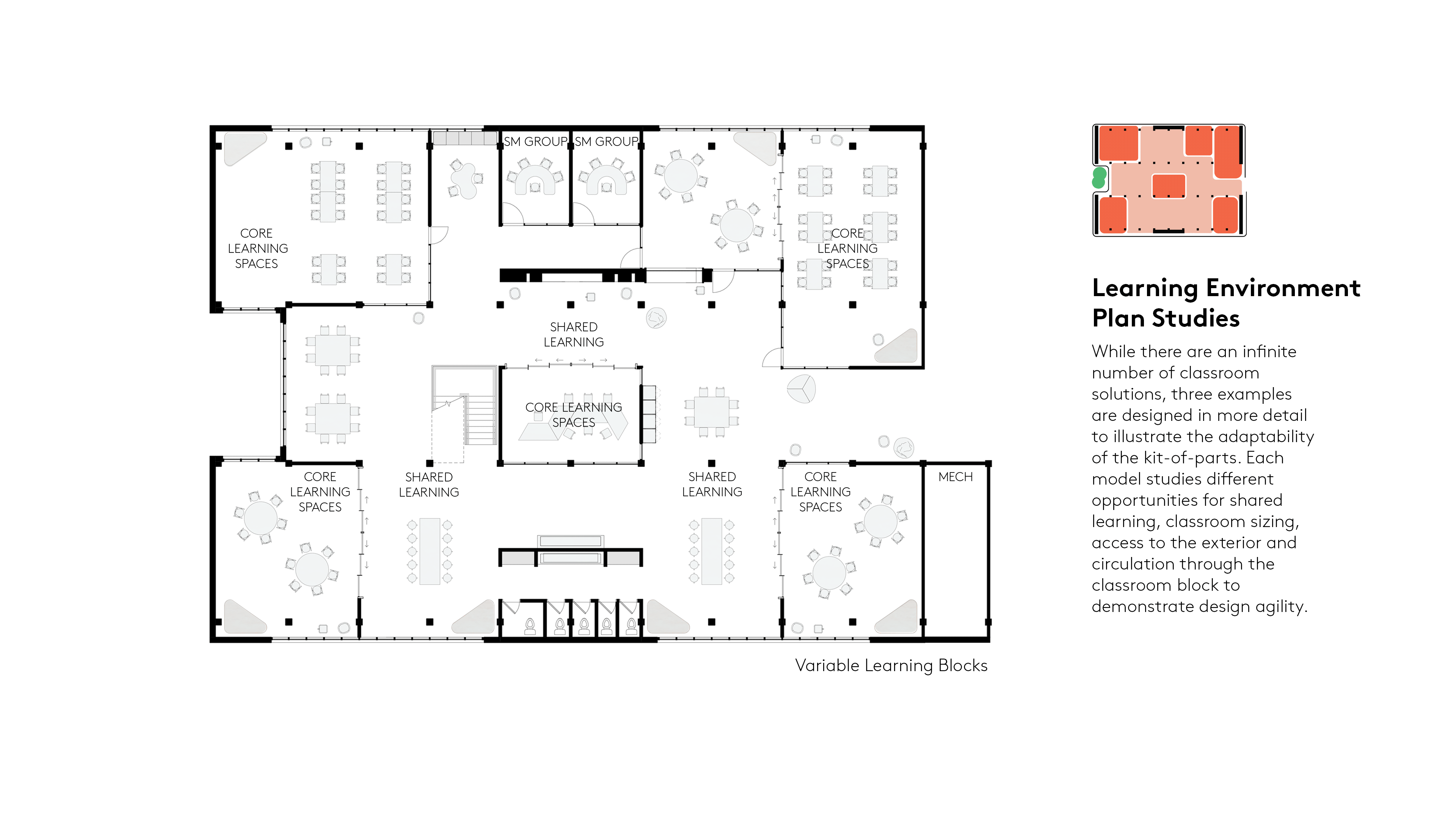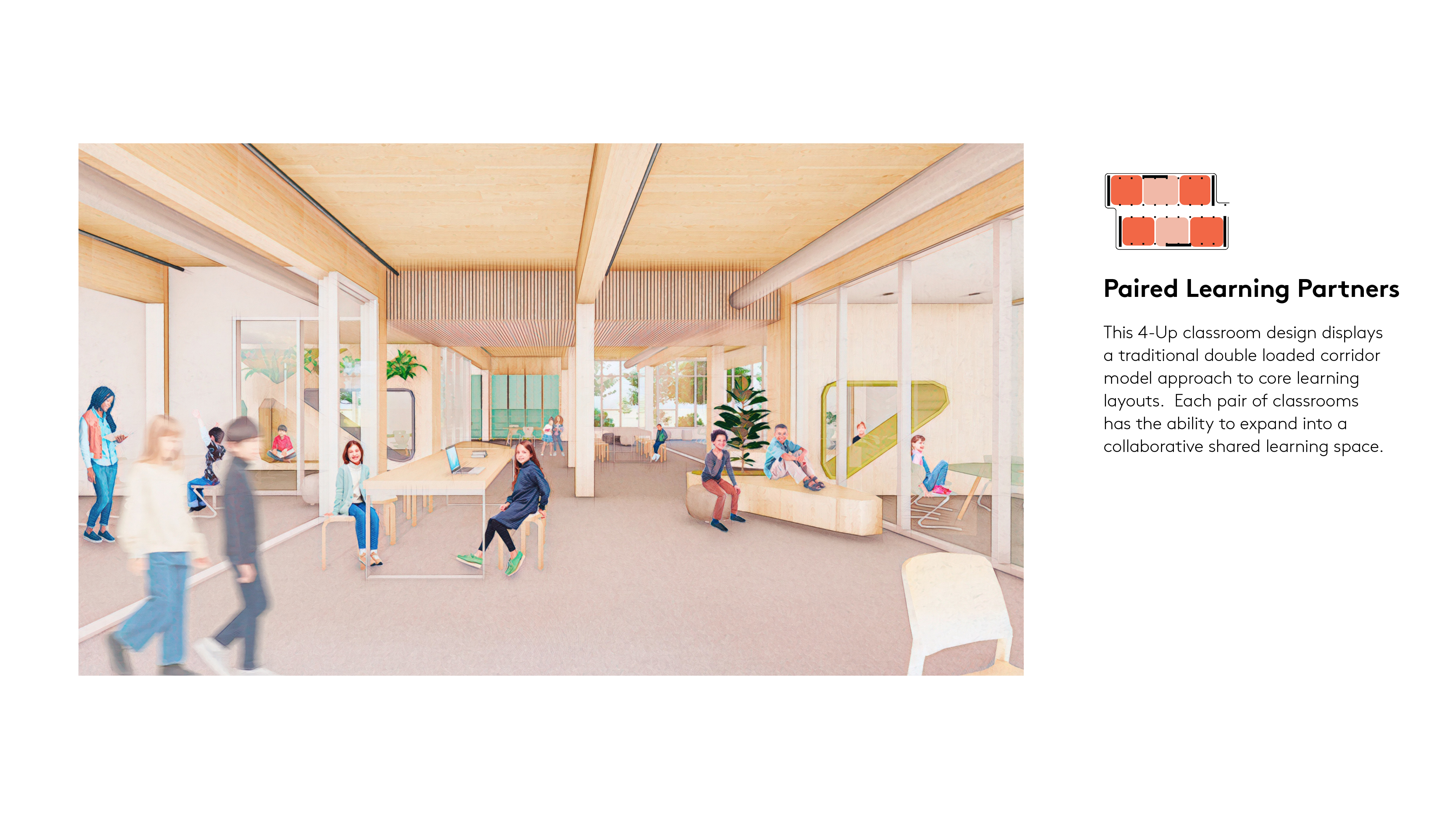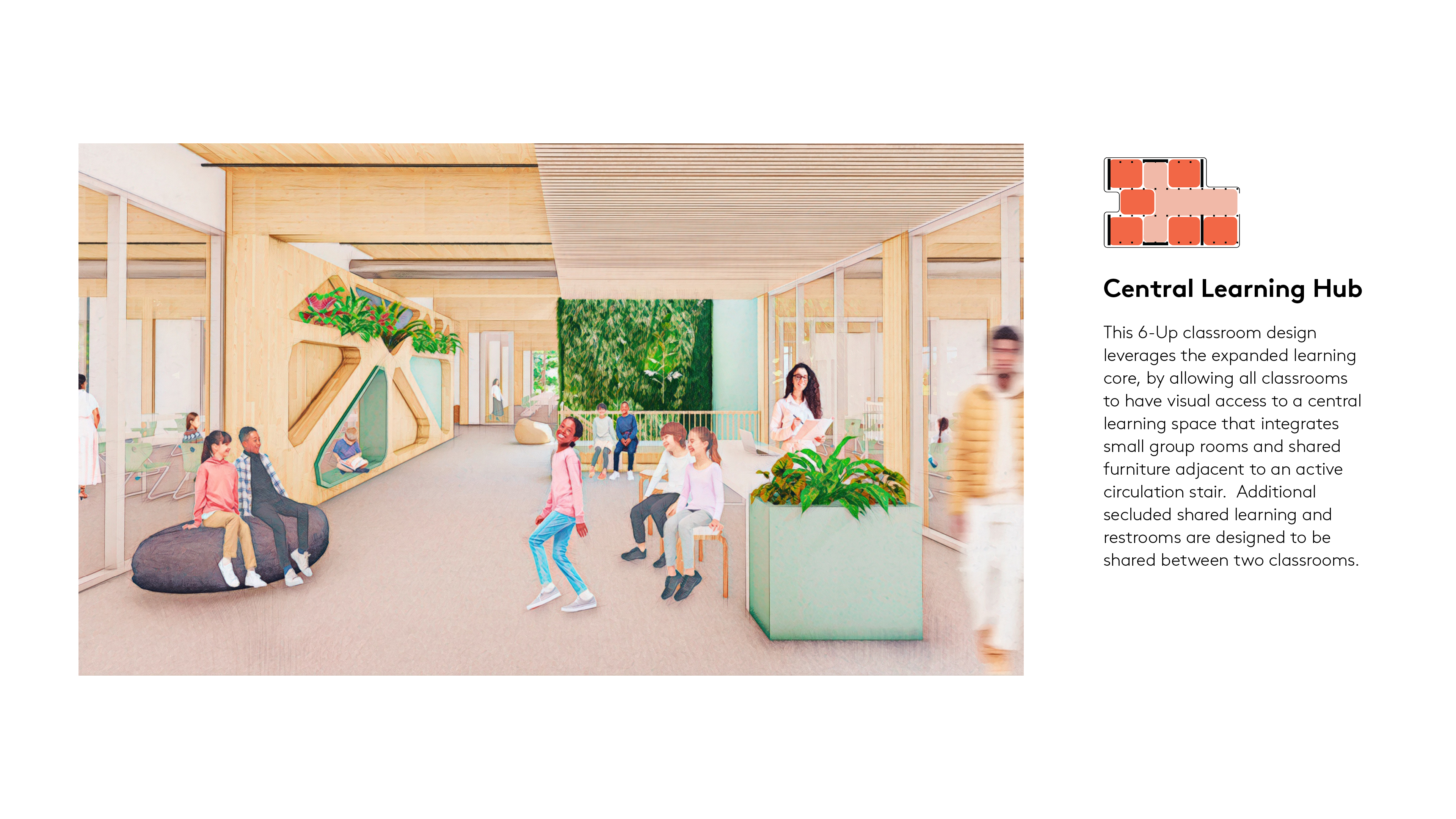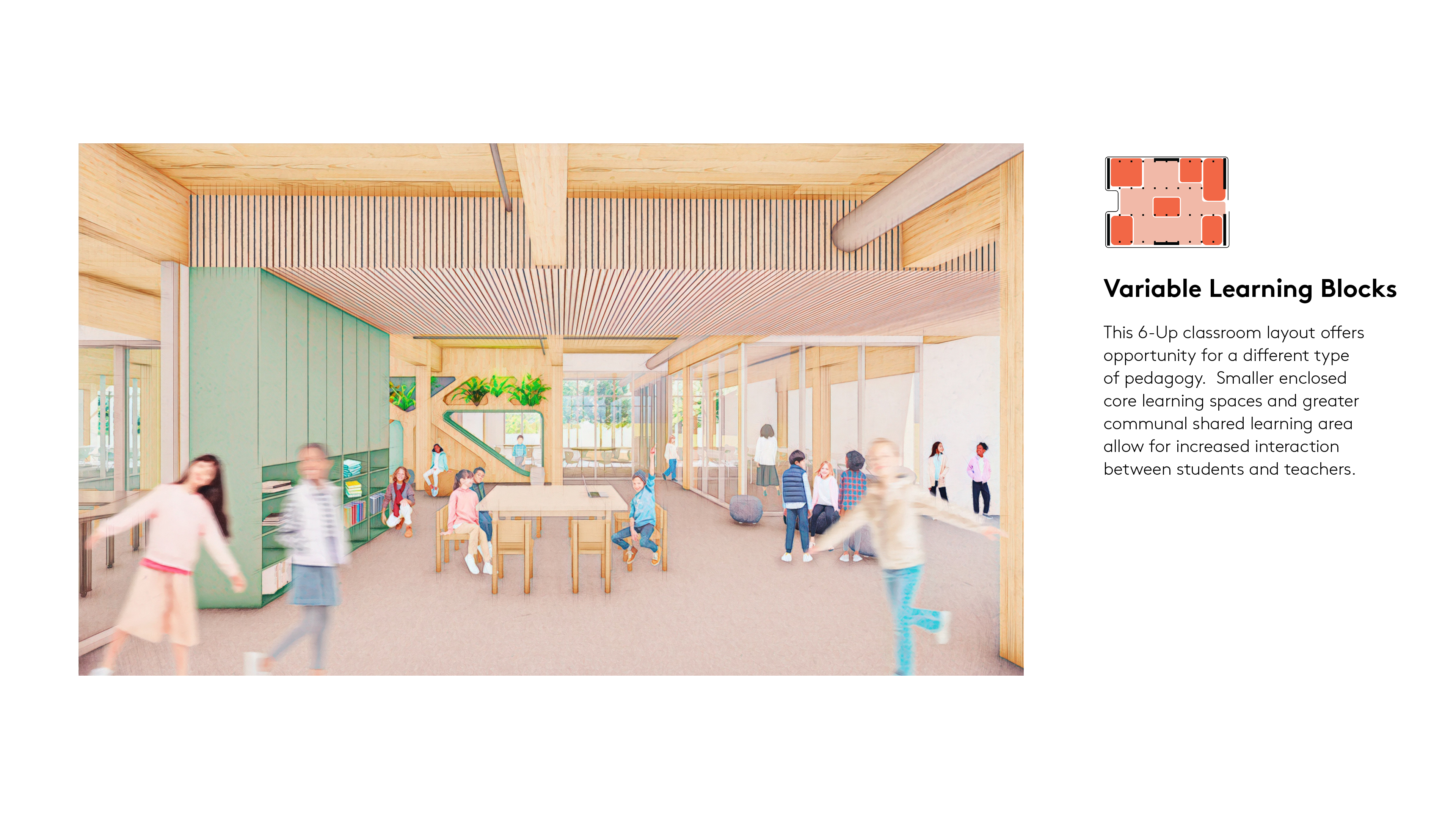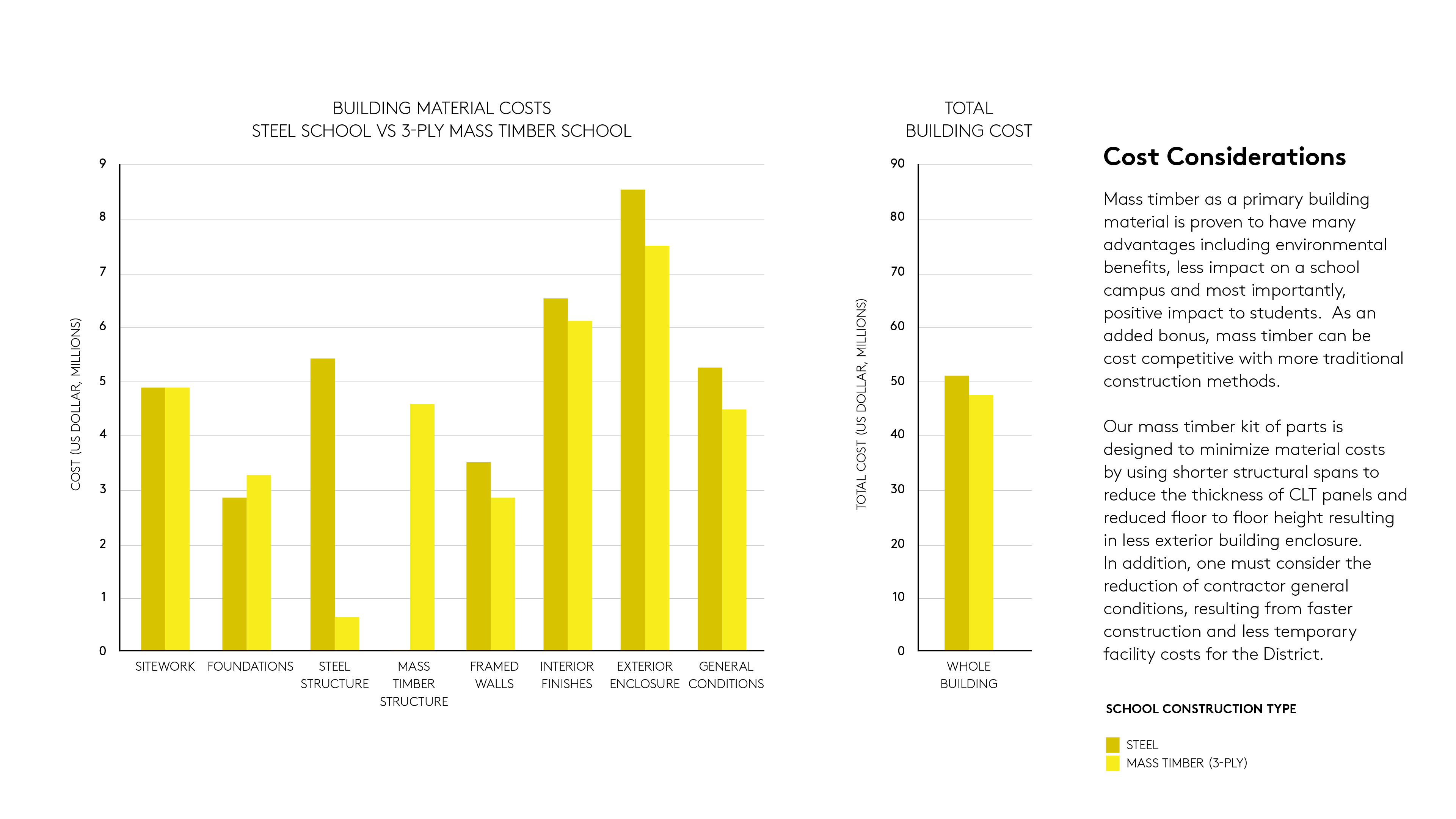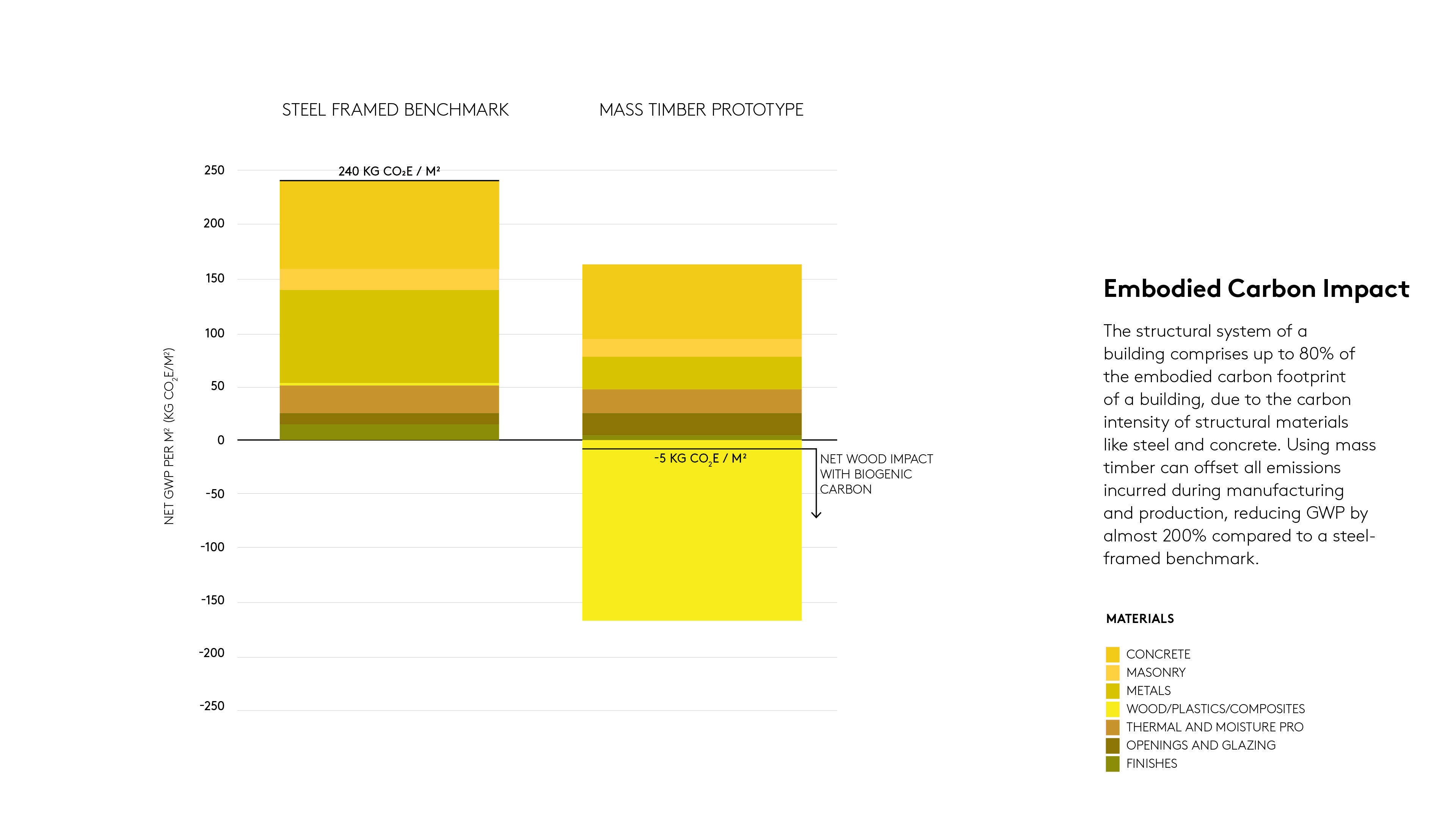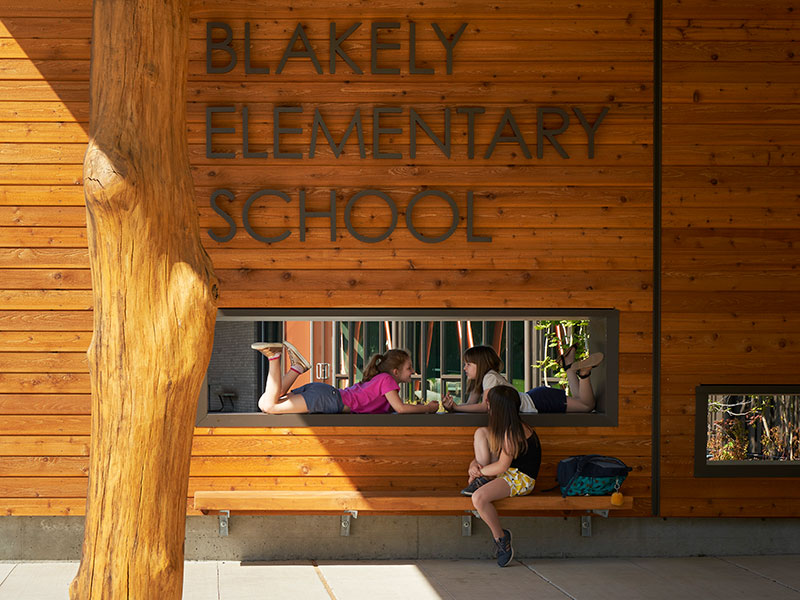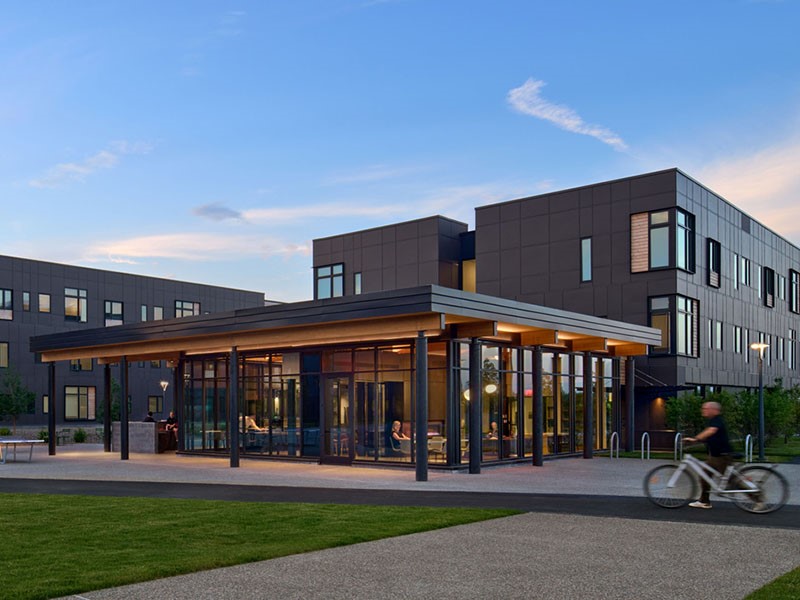Mass Timber Schools: Wellness in Wood
Vision
Emerging mass timber technology is changing the construction industry with multiple advantages such as reducing embodied carbon and compressing construction schedules. There is also a growing body of research proving biophilic indoor environments can improve learning outcomes and enhance student performance. Finding a way to optimize mass timber technology will afford a cost-competitive biophilic approach to design and build better schools.
Research
Student engagement is essential to positively impact education. This Mithun R+D effort seeks to expand current understanding of the links between learning space design and student engagement, excitement, focus and stress. The Building Better Schools team began by collecting research addressing the link between biophilic space, learning, wellness and neuroscience. At the same time, the team surveyed data on the benefits of mass timber through project case studies in both Europe and North America. While research on mass timber’s specific impact on the K-12 demographic is limited, research on the biophilic influences of wood in interior environments has proven that connection to natural materials increases productivity, reduces stress and improves overall well-being—all core tenets behind positive student engagement.
Well-designed modern schools maximize adaptability, providing agile learning spaces that accommodate a variety of evolving learning models and teaching pedagogies over time. The team analyzed traditional classroom modules against an approach driven by an optimized three-ply mass timber structural grid. As a result of the initial systems cost and flexibility analysis, the team conceptualized a mass timber kit-of-parts based on a structural grid and sectional framework that balances efficient timber fiber volumes with the need for agile spaces. Employing an integrated architectural, structural and mechanical systems approach, the team took an iterative approach in evaluating optimization of mass-timber learning environments for K-12 students.
The results demonstrate that mass timber spaces can be cost competitive for schools when compared to a steel-framed baseline—providing warm, well-daylit interiors with exposed mass timber columns, beams, ceilings and walls that invoke biophilic responses and significantly reduce embodied carbon impacts.
Looking Forward
A resource for collected biophilia and mass timber research, the Building Better Schools project explores design implementation for K-12 schools and can be found in a comprehensive report located here.
This research initiative will be on-going through continued knowledge exchange with industry and educators. School communities that have interest in mass timber or prior experience adopting mass timber technologies in a K-12 school are needed to further the study.



